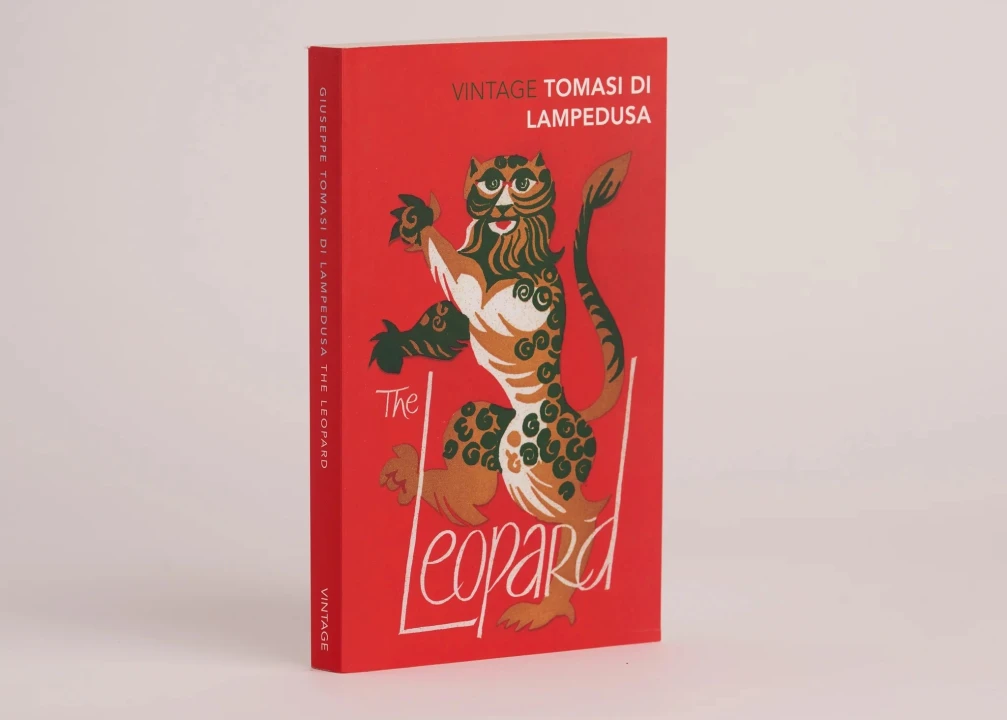The Leopard – Il Gattopardo, in Italian – is a book published in 1958 and written by Giuseppe Tomasi di Lampedusa (1896-1957). The author didn’t live to see his work printed and made public as it came out a year after his death and in its full edition in 1969. The book gained immediate success and was awarded the Strega prize in 1959.
Against the backdrop of the political unrests in the 1860s, the author tells a story of a decadent and perishing aristocracy whose existence is compromised by revolution and democracy. Tomasi was born in Palermo from an aristocratic family, his father was the Prince of Lampedusa and Duke of Palma di Montechiaro, he was home-schooled by his mother and grandmother, who read him the novels of Emilio Salgari, and attended Shakespeare’s plays in the theater of their house.
Tomasi served as an artillery during World War I, during which he was captured and imprisoned in Hungary, but later escaped and came back to Italy on foot. He first wanted to pursue a diplomatic career but, after a nervous breakdown, decided instead to focus on intellectual activities by writing, reading in different languages and discussing literature.
He started writing his most famous work in 1955, which was rejected by publishers while the author was still alive.
The story is set in Sicily at the end of the Bourbon domination and centers around a very rich and aristocratic Sicilian family, in particular the main character who is the Prince Fabrizio Salina. The author depicts a lively and colorful picture of the Italian island, permeated by a fast and modern spirit, fully aware of the problems of that time and what was happening on the historical and political scene.
The novel is in fact a psychological study of its protagonist, Don Fabrizio – called the Leopard because of his family crest – who lives through significant changes as he observes how power dynamics in Society changed going from the old Bourbon aristocracy to the new Kingdom of Italy and holding on to the unscrupulous and liberal bourgeoisie during the 1860s.
The Leopard is considered as one of the greatest literary piece of the 20th century in Italian literature and a classic of European literature; an immortal masterpiece which sold more than 3.2 million copies and was translated into more than 37 languages.
The story develops in the 19th century during the Risorgimento, beginning when Giuseppe Garibaldi, alongside his thousand volunteers, arrives in Sicily and puts an end to the presence of the Bourbons defining the passage from feudalism to modernity.
The book does not only reflect what was happening in the country and within society, but it also includes daily activities from recitals of the Rosary, evening reading around the fire to dinners and walk and hunting expeditions in the countryside.
As previously mentioned, the protagonist is Don Fabrizio Corbera, Prince of Salina, and a wealthy landowner with a strong passion for astronomy. His favorite nephew, Tancredi Falconeri, is an ambitious and frivolous character who supports Garibaldi’s unification goal. Tancredi falls in love with Angelica Sedàra, the daughter of a member of the merchant class who aspires to gain power. The book therefore outlines clear examples of class struggles between the declining elite represented by the Corbera family and the climbing middle class portrayed by the unscrupulous Sedàra.
Eventually, Don Fabrizio understands that he must approve of his nephew’s marriage with Angelica to make sure that Tancredi can pursue his ambition to become a diplomat. This would allow Tancredi to have the financial resources to succeed in the new regime and provide a title of nobility to Angelica and her parents.
Finally, the story ends in 1910 with the prince that had died, and his line has consequently ended.
The book was firstly rejected by notorious publishers such as Mondadori and Einaudi who deemed it reactionary and weak, not in line with the mainstream Italian literature of that time. Eventually, it was Feltrinelli that decided to publish it.
The work is considered as a historical novel, which became bestseller in Italy and abroad; only in the first fourth months, 52 editions were printed.
After initial objections in the first years, the novel started to be appreciated for its writing style and modern narrative structure. The narration contains in fact stylistic shifts that echo Prince Salina’s different points of view and Tomasi’s perceptions of history.
What is more, the story became a movie in 1963 directed by Luchino Visconti.




